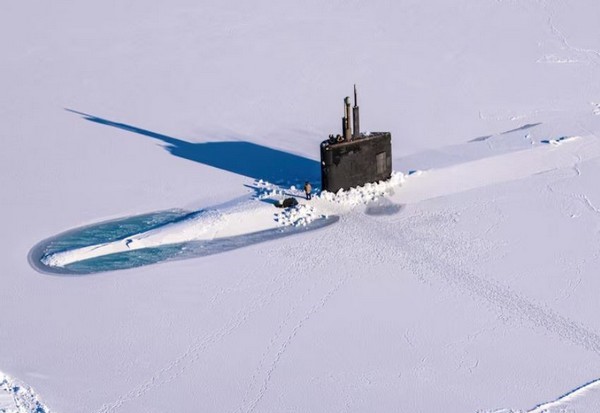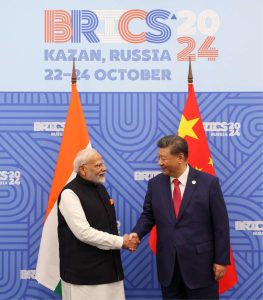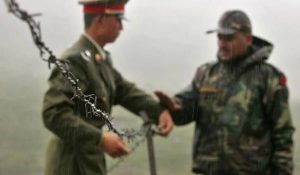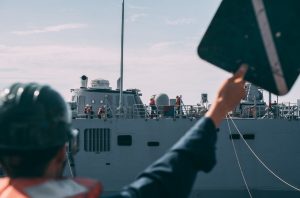The strategy highlights the need for more ground-based sensors, space-based sensors and long-range radar to better pick up on activity by US adversaries…reports Asian Lite News
The new Arctic Strategy 2024 of the US called for expanding the types of surveillance and intelligence capabilities and strengthening cooperation with allies in the region to prevent Russia and China from exploiting the cold and icy northern region at America’s expense, reported Voice of America (VOA).
The mandate, part of the Pentagon’s just-released 2024 Arctic Strategy, comes as US defence officials warned climate change is melting Arctic ice that used to keep adversaries at bay, and there are indications of growing Russian-Chinese cooperation in the region.
Deputy Defence Secretary Kathleen Hicks, while briefing reporters at the Pentagon, said, “In the Arctic, the strategic can quickly become tactical.”
“Ensuring that our troops have the training, the gear and the operating procedures for the unique Arctic environment [may] be the difference between mission success and failure,” she added.
This strategy further calls for expanding the types of surveillance and intelligence capabilities that the US military employs elsewhere in the world to the far north, where frigid temperatures can interfere with their operation, VOA reported.
Moreover, the strategy highlights the need for more ground-based sensors, space-based sensors and long-range radar to better pick up on activity by US adversaries.
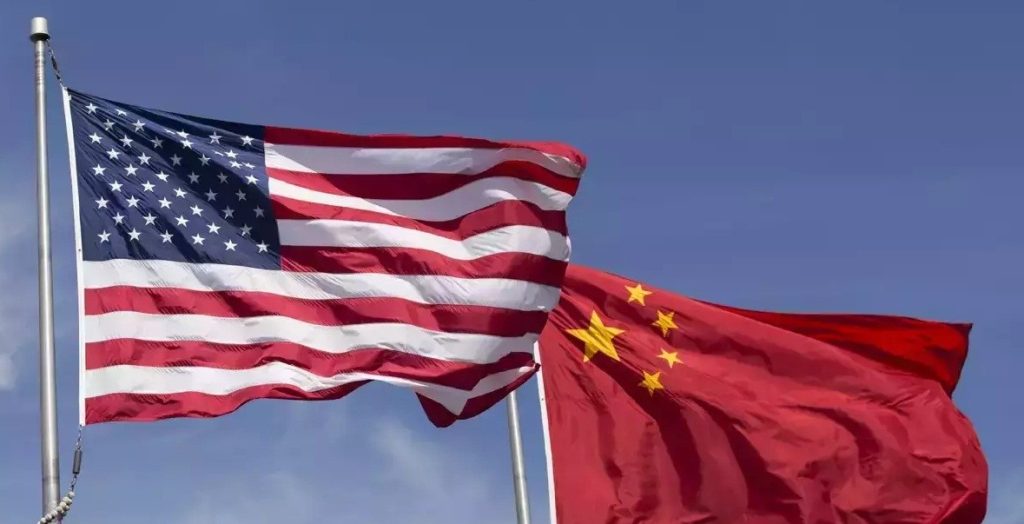
America is also focusing on increasing its unmanned aerial reconnaissance capabilities and its communication capabilities.
Hicks said the US has already invested tens of millions of dollars in such capabilities, however, more is needed, as reported by VOA.
“The Arctic’s vast distances, especially in North America, make supporting infrastructure vital for Arctic operations and presence,” according to the new strategy.
“However, much of the legacy Cold War-era infrastructure has declined over time due to the harsh environment, lack of investment, and climate change-driven permafrost thawing and coastal erosion.”
According to US defence officials, one bonus for the new Arctic strategy is the accession of Sweden and Finland to NATO, which means every Arctic nation except for Russia is now part of the Western alliance, reported VOA.
Notably, US officials have repeatedly praised Swedish and Finnish capabilities in the Arctic, and the strategy envisions additional joint exercises and cooperation, which could be required to counter an uptick in Russian and Chinese activities in the region.
“It’s very noticeable and concerning,” Hicks said.
“The Russians, of course, have, even as they’ve continued their operation, their war in Ukraine, they’ve been continuing to invest in their infrastructure throughout the Arctic region that they can access,” she said, adding, “And then we’ve seen much more PRC (People’s Republic of China) activity, both in terms of so-called research, but because of their civil fusion, we always have concern that there’s a military aspect to that.”
Furthermore, there have also been indications of increased cooperation between Russia and China.
Last August, the two countries conducted a joint naval patrol near Alaska’s Aleutian Islands, prompting the US to deploy four naval destroyers and patrol aircraft as a precaution, according to VOA.
Deputy assistant secretary of defence for the Arctic, Iris Ferguson, however, told reporters on Monday that those types of Russian and Chinese efforts are just the tip of the iceberg.
Notably, Arctic is warming faster than anywhere else on the planet. Sea routes that sailors and explorers have dreamed about for centuries are starting to open. The promise of Arctic riches–oil, minerals, trade routes, even fish–has started to draw interest from far outside the northern latitudes.
“We’ve seen an uptick in their cooperation over the last couple of years,” Ferguson said. “We see China investing in a lot of Russian energy in order to not only have them supply that energy to the PRC, but also to help embolden some of Russia’s activity in Ukraine.”
China has declared itself a “near-Arctic state,” a designation it invented to push for a greater role in Arctic governance. It has dispatched research expeditions, sought to establish mining and gas operations, and envisioned a network of shipping routes crossing the Arctic, a “silk road on ice.” It describes itself as an “active participant, builder, and contributor in Arctic affairs,” one that has “spared no efforts to contribute its wisdom to the development of the Arctic region,” according to RAND Corporation, an American nonprofit global policy think tank, research institute, and public sector consulting firm
Ferguson sought not to overplay the threat, saying Russian-Chinese cooperation in the Arctic is “somewhat superficial in nature still, especially from a military perspective.”
However, Pentagon officials expect the Russian-Chinese military relationship to evolve, noting the increasing level of Chinese military research in the Arctic and Beijing’s attempts to “internationalise” and influence the region as a whole, reported VOA.
“We have seen them operating more regularly in the last several years from a military perspective. Even just a couple of weeks ago, there were several Chinese warships off the coast of Alaska,” Ferguson said. “They are our long-term pacing challenge and I think that includes the Arctic.”
However, the Russian and Chinese embassies in Washington have not yet responded to requests for comment.
The United States sees China as a potentially destabilising force, with the economic and military power to try to bend the established order to its liking. The Pentagon considers China its “pacing challenge” of the foreseeable future. (ANI)
ALSO READ: The Rise and Fall of Joe Biden
